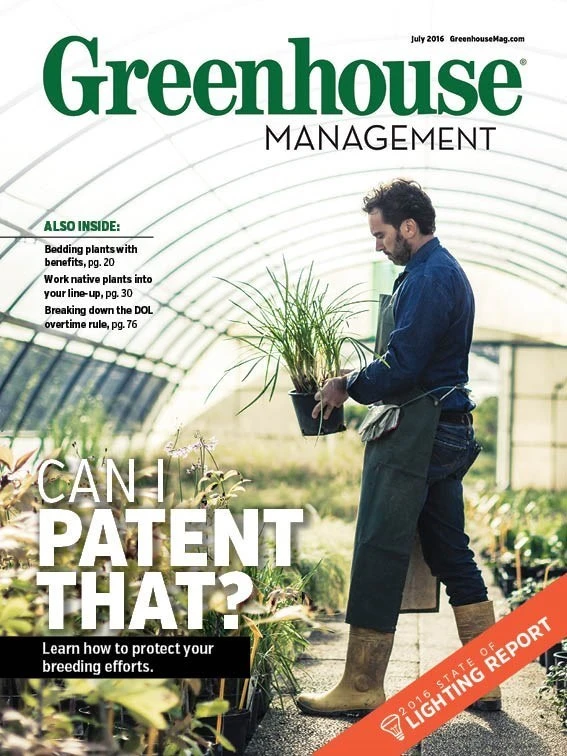
Amidst the research findings of a significant pollinator decline, the horticulture industry is working hard to familiarize consumers with the importance of supporting the roles insects, birds, bats and other animals play in helping their ecosystems thrive. And in order to reach their audience, they’re spreading the word through the most current and popular digital technologies. Here are just some of the ways tech-savvy industry advocates are educating the public.
Media sharing

Social media is arguably one of the most prevalent and user-friendly facets of the internet. An incredibly popular practice among Facebook, Twitter and Instagram users is uploading and sharing images and videos for their connections to view. And industry organizations have begun to follow suit. The Native Bee Awareness Initiative (bit.ly/21cCbmj) posts a bevy of artistic photographs of pollinators in action on its Facebook page, inspiring browsing users to share the images and spread information to friends.
Another organization, the Save Our Monarchs Foundation (bit.ly/1UHfkdI), has tapped into the same tactic, but focuses on media that tell human interest stories, such as the efforts made by locals to plant milkweed and conserve the Monarch butterfly.
Building camaraderie

Like it or not, social media tends to be fueled by other people’s perception of themselves. Whether it’s a thumbs-up “like” or a “follow,” consumers seek out others whose interests and opinions coincide with their own because it helps them feel connected. The National Pollinator Garden Network has taken on this idea in a positive way. As part of the Million Pollinator Garden Challenge, they have launched the “Bee Counted” tracker, an interactive map that flags pollinator sites and wildlife federations all over the world. An optimistic and encouraging site to get consumers on board, they also post a robust call-to-action for readers: “Preserve and create gardens and landscapes that help revive the health of bees, butterflies, birds, bats and other pollinators across America.”
Hashtag chats

Another popular aspect of social media is the emergence of the hashtag, thanks to Twitter. A hashtag is a pound (#) sign followed by a word or phrase that serves as a tag for the message or image of the post. It’s a popular way for users to categorize their tweets so other users will see their content when they search for that topic. The use of hashtags has permeated Instagram and Facebook as well, and it continues to be an efficient way for users to peruse and interact with the specific content they’re looking for. TIME magazine started the hashtag #TIMEBees to generate conversation about their 2013 cover story, “The Plight of the Honeybee." The hashtag was quickly shared by Twitter users all over the world, and even received recognition from the USDA (United States Department of Agriculture) and EPA (Environmental Protection Agency).

USDA campaign

The nation’s capital is also utilizing modern communication, and during this year’s Easter Egg Roll, the United States Department of Agriculture launched its “Plant a Window Box for Pollinators” campaign. It features a free online tool that guides visitors in growing native plants based on their zip code and ecoregion. Upon completion of the activity, users can print out their results to take to their local garden center to select the appropriate plants for attracting pollinators. The recently redesigned website also features a virtual game built to be fun and educational for all ages.
BeeNow – The Bee Health Magazine

Launched in 2015 by Bee Care, a conservation website run by Bayer Global, this publication extensively outlines the worldwide pollinator issue and the actions being taken to address it. Bee Care features up-to-date and credible information from leading horticulture and pollination experts from around the globe. The magazine — which recently published its second annual issue — is available both in hard copy by mail order and by digital-version download, and can be enjoyed by readers in either English or German.
Electronic periodicals
Another electronic reading resource that is slightly more old-school — but always relevant — is the online periodical. This medium has become even more crucial as more consumers are continuing to invest in smart phones, tablets and e-readers. In addition to its pollinator challenge, the National Pollinator Garden Network also provides an ample list of resources for individual research as well as for teaching. Users can find links to online collections in PDF, as well as curriculum tools designed for educators with students at all ages and levels. Included are materials from the USDA, Xerces Society, Cornell University and more.

Explore the July 2016 Issue
Check out more from this issue and find your next story to read.
Latest from Greenhouse Management
- Anthura acquires Bromelia assets from Corn. Bak in Netherlands
- Top 10 stories for National Poinsettia Day
- Langendoen Mechanical hosts open house to showcase new greenhouse build
- Conor Foy joins EHR's national sales team
- Pantone announces its 2026 Color of the Year
- Syngenta granted federal registration for Trefinti nematicide/fungicide in ornamental market
- A legacy of influence
- HILA 2025 video highlights: John Gaydos of Proven Winners





